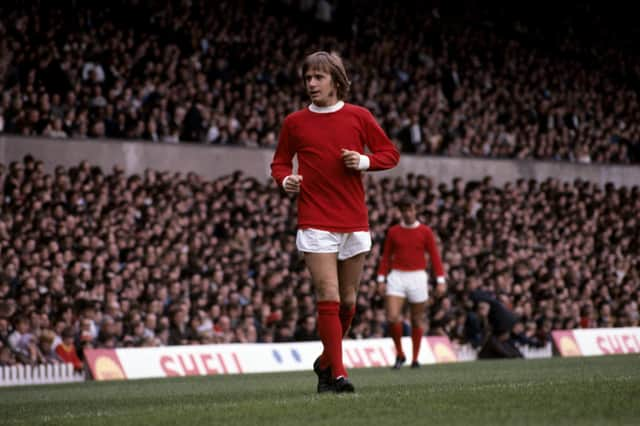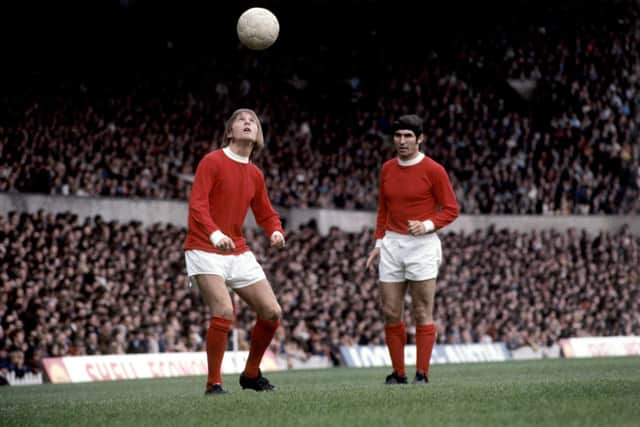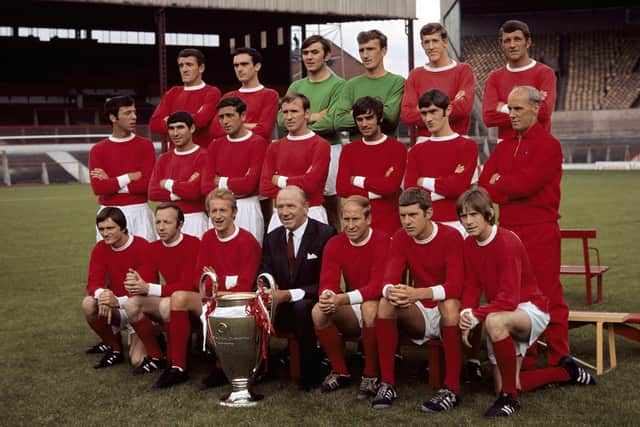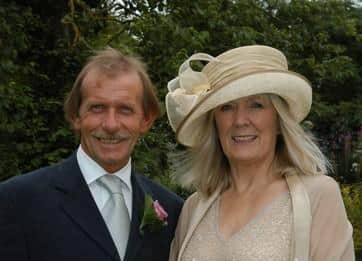Interview: Aberdonian John Fitzpatrick on making history as Manchester United’s first substitute and trying to tame best mate George Best


It might amount to treason to suggest it, but Denis Law was not irreplaceable. John Fitzpatrick knows this better than anyone. He had the unenviable task of coming on for the injured Law during Manchester United’s otherwise forgettable 5-1 defeat by Spurs in October 1965.
This switch was notable for two reasons. Not only was an Aberdonian replacing an Aberdonian, perhaps exchanging a quick ‘fit like?’ as they passed. They were also performing Manchester United’s first-ever substitution in a competitive match.
Advertisement
Hide AdAdvertisement
Hide Ad“Imagine replacing my hero!” says Fitzpatrick now. “I was almost embarrassed. I used to look for his name in the evening paper in Aberdeen. And then to end up playing with him was unbelievable.”


“It’s not fair!” bemoaned the critics when this innovation was implemented. There was considerable resistance from those who felt that bringing substitutes into the equation would have a negative impact on the game. Imagine what these Luddites would say now? Last month Manchester United became the first British club to make a quintuple substitution during the course of their 3-0 victory over Sheffield United. The rule change has been temporarily applied for the Covid-19 era amid concerns about the players’ fitness after such a long lay-off. Now it looks set to remain in place next season – Fifa has permitted the change until the end of the 2020-21 campaign, once again eliciting a mixed response.
The subject of pioneering substitutes seems especially relevant. Pat Quinn’s death earlier this week reminded us that he holds the title of Hibs’ first sub after replacing Joe Davis in a 5-1 defeat by Clyde in November 1966.
And then there’s Fitzpatrick. He and Law were spotted by the same north-east scout, the local legend Archie Beattie. There was a clutch of Aberdeenshire lads who made their way to Manchester United around this time, including Ian Moir, a talented winger who lost his way slightly, Ian Donald, who later became Aberdeen chairman, and Alex Dawson, the forward who died yesterday at the age of 80.
“I was playing for the Frederick Street school team,” recalls Fitzpatrick. “Naturally you are hoping scouts will be there to see you. I had been playing well at the time. Archie Beattie came up to me after the last game of the season, told me who he was, and asked if I’d like to go down to Man United…


“You won’t believe it, but they were the team I supported – along with Celtic in Scotland. I had heard some clubs were interested in me. But I never thought it would be them. Archie met up with my dad a couple of weeks later and we arranged to go down to Old Trafford. The rest is history…”It almost wasn’t.
European Cup final heartbreak
After a successful trial he was told by Manchester United to get back up the road and prepare for a new career at the biggest club in the land. Fitzpatrick duly broke his ankle while playing for Aberdeen Lads’ Club Thistle against Hawthorn United the following weekend.
A letter from Joe Armstrong, the Manchester United chief scout, soothed any fears they might retract the offer. A club healing after the Munich air crash was still determined to exhibit class. Fitzpatrick’s Manchester United career was only postponed. He was a member of the side which won the FA Youth Cup in 1964 along with great friend George Best. They even grew their hair long together from the short-back-and-sides look both sported in that fresh-faced team’s photograph.
Advertisement
Hide AdAdvertisement
Hide Ad

Fitzpatrick proved handily versatile. Although normally a defender, one of his greatest games was a testing European Cup quarter-final against Gornik in 1968. He wore the No 7 shirt normally associated with Best in front of a partisan crowd of over 100,000. United won 2-0 in arctic conditions. Matt Busby later described it as one of the finestnights in the club’s history. “I feel the warmth of our dream living on,” the manager said. “I’ve a feeling this is our year.”
And so it proved. But Fitzpatrick was left out of the side that defeated Benfica 4-1 at Wembley. Veteran defender Bill Foulkes, who scored in the 3-3 semi-final second-leg draw with Real Madrid that sealed United’s place in the final, retained his place.
“He was a Munich survivor and coming towards the end of his career,” says Fitzpatrick. “There was no way Matt Busby was not going to include him, understandably. Of course, this was devastating for me personally not to be involved. But I got a medal because I contributed to the games leading up to it. It was a nice touch from Matt.”
Ideally, one would like to be sharing a glass of something dark and fruity with Fitzpatrick, who turns 74 next month, as he relates his remarkable story.Lockdown restrictions are easing. Alzheimer’s, on the other hand, has started to tighten its grip on Fitzpatrick, squeezing the most recent memories from his mind. His Manchester United days can seem more vivid to him than what he did yesterday. However, there’s one moment that he almost wishes he was no longer able to recall.
He admits he always liked a tackle. He is often described as “fiery” and “controversial” in contemporary newspaper reports. He was sent off for retaliation in the European Cup semi-final first leg v AC Milan in 1969 as Manchester United’s defence of the trophy floundered.
A game against the Leeds United of the time was never likely to be a place for shrinking violets. And opposite man Johnny Giles was among the more uncompromising members of that Leeds side.
“It was a bouncing ball,” recalls Fitzpatrick. “And with me being a young, enthusiastic boy I was going in to win the tackle. I put my leg out and he was right over the top. That was it. That was me. Finished.”
He was 26 years old.
The tackle by Johnny Giles
There were attempts at a comeback, which was something Giles himself pointed out when the incident returned to the news agenda more than 30 years later after the publication of Roy Keane’s autobiography. Giles criticised the book – and Keane, and by extension ghostwriter, Eamon Dunphy – for its unapologetic depiction of the tackle that all but finished Leeds United player Alf Inge-Haaland’s career. Dunphy pointed out that Giles should know all about the often brutal realities of football – he had put Fitzpatrick out of the game after all when breaking his leg.
Advertisement
Hide AdAdvertisement
Hide Ad